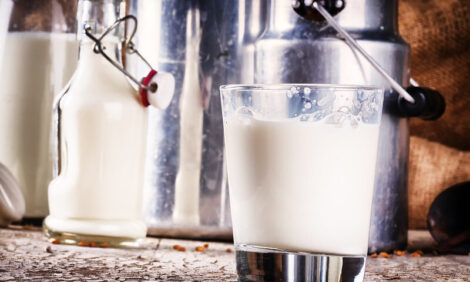



Beef With A Better Carbon Footprint
The agriculture sector in the UK has been set a target to reduce greenhouse gas emissions by 18 per cent on the levels in 2008, writes Chris Harris for TheCattleSite.This is a reduction on the levels of 610 million tonnes of CO2 equivalent greenhouse gases and farming has a target of reducing this amount by 11 per cent by 2020.
However, according to Chris Lloyd the industry development manager for the English Beef and Lamb Executive the question of the size of agriculture's contribution to greenhouse gas emissions has been confused by many organisation.
He told the Outlook 2011 conference in London recently that there is an impression that CO2 is the main greenhouse gas, but others are also important especially where food is concerned. This includes methane that has 21 times the global warming potential of CO2, nitrous oxide that has 296 times the global warming potential and refrigerant gases that have many thousand times the global; warming potential of CO2.
"A number of organisation believe that the way to reduce emissions I to reduce red meat eating and the number of animals," he said.
Mr Lloyd said that the surveys of 60 farms carried out for the EBLEX road maps on the carbon footprint and global warming potential of beef and lamb production showed that there was is variance in the carbon footprint of the farms. This variance meant that the 11 per cent target is achievable.
The top third of the farms surveyed had a footprint of 6.2kg of CO2 equivalent while the bottom half had a footprint of 19.1kg.
He said that the carbon footprint of beef and lamb production can be achieved through efficiencies.
"Where you are increasing efficiency from a gross margin point of view, farmers are also reducing their carbon footprint," Mr Lloyd said.
"More efficient farms have a low CO2 output."
He said that in order to achieve the lower carbon footprint farms have to increase feed efficiency, increase fertility and increase longevity.
Every 5kg of CO2 reduction per kilogram liveweight is equivalent to 50p per kilogram increase in margin, the surveys found. For sheep the margin increase was 28p per kilogram of CO2 reduction.
By increasing daily liveweight gain and the number of calves per cow, the beef sector will be able to achieve the 11 per cent saving it is seeking.
"Improved economic performance goes hand in hand with lower CO2 equivalent costs of production," said Mr Lloyd.
"Cattle and sheep produce valuable products for human consumption but at a greenhouse gas cost.
"We can reduce greenhouse gas cost considerably if we apply what we know."
He added that large areas of the UK cannot reasonably produce food for people without cattle or sheep, but unless consumer behaviour changes reducing production at home will simply export the problem.
"The industry has to take ownership of the issue."
He added: "We can and should make a contribution to reducing the carbon footprint of production, but we should robustly defend the role of ruminants in food production, soil management as a carbon sink, habitat management and landscape management," Mr Lloyd said.


